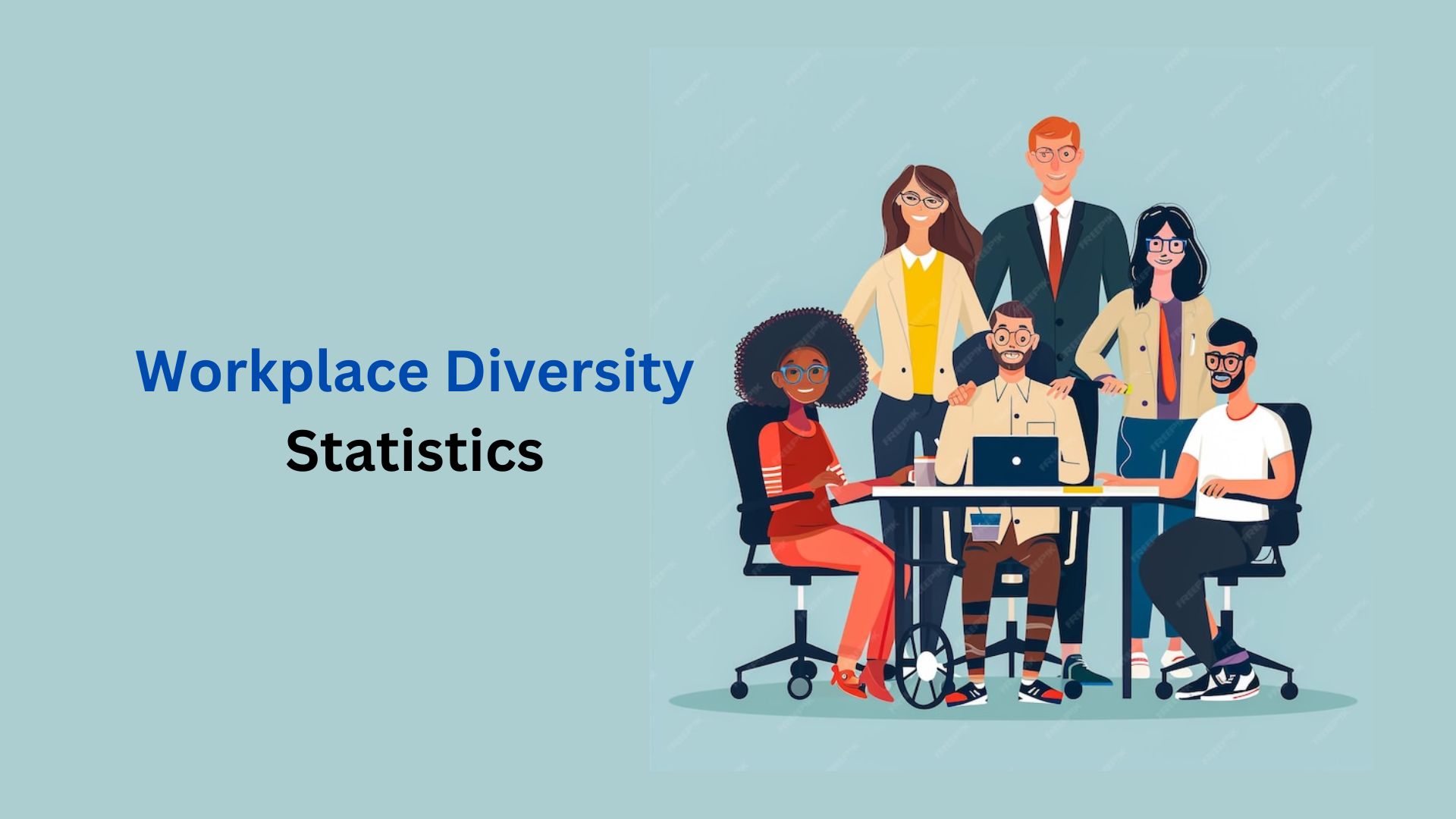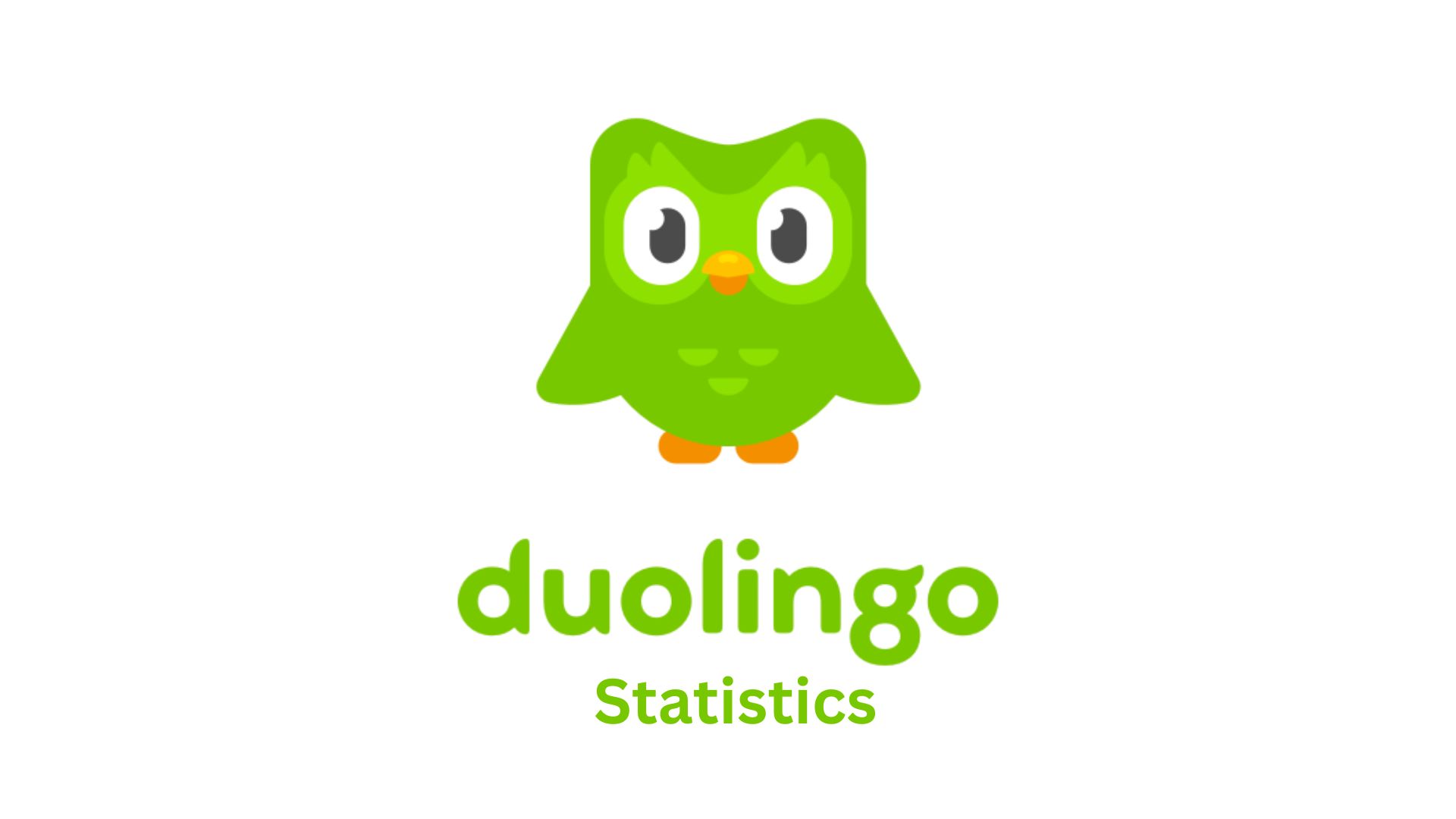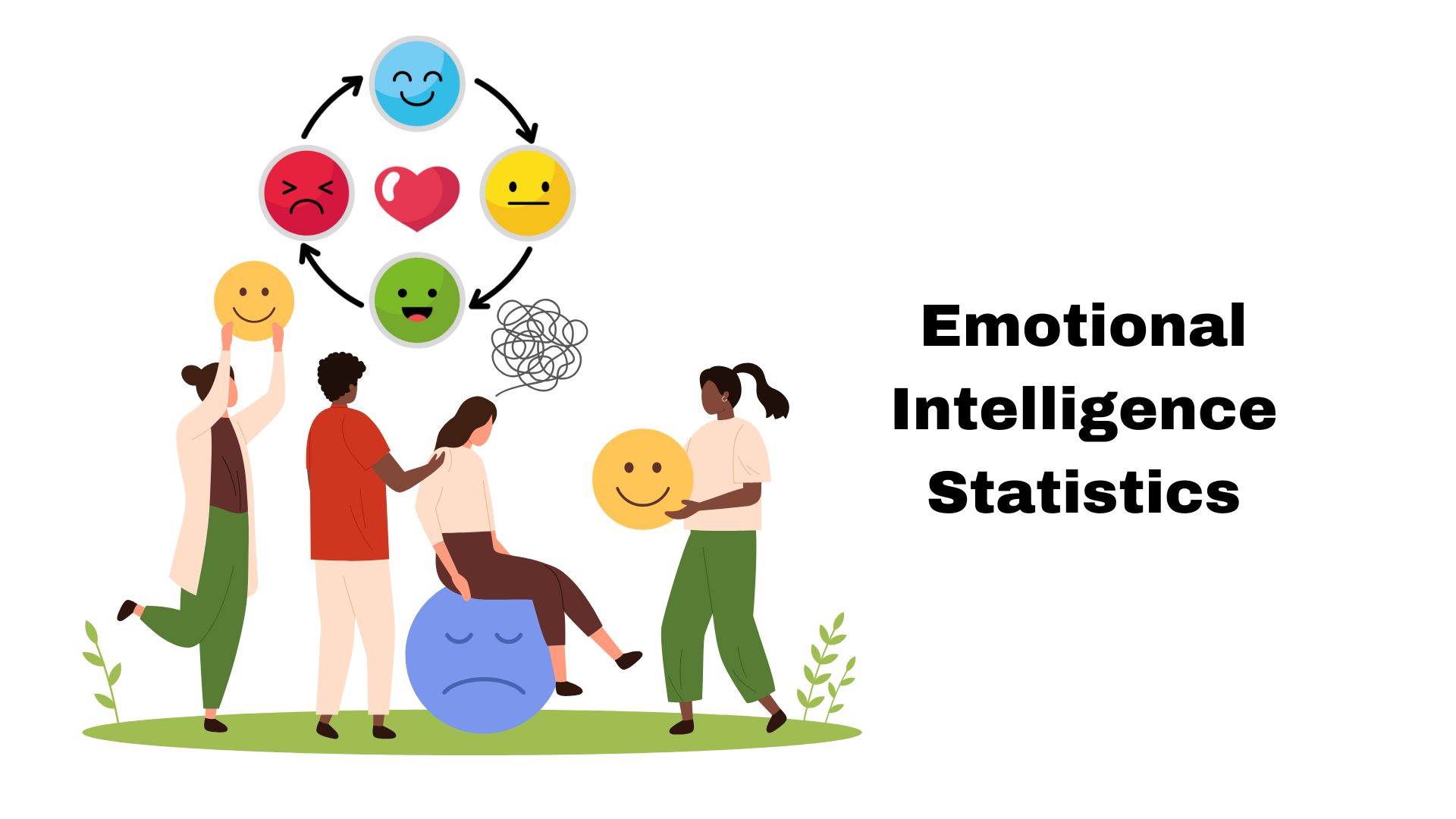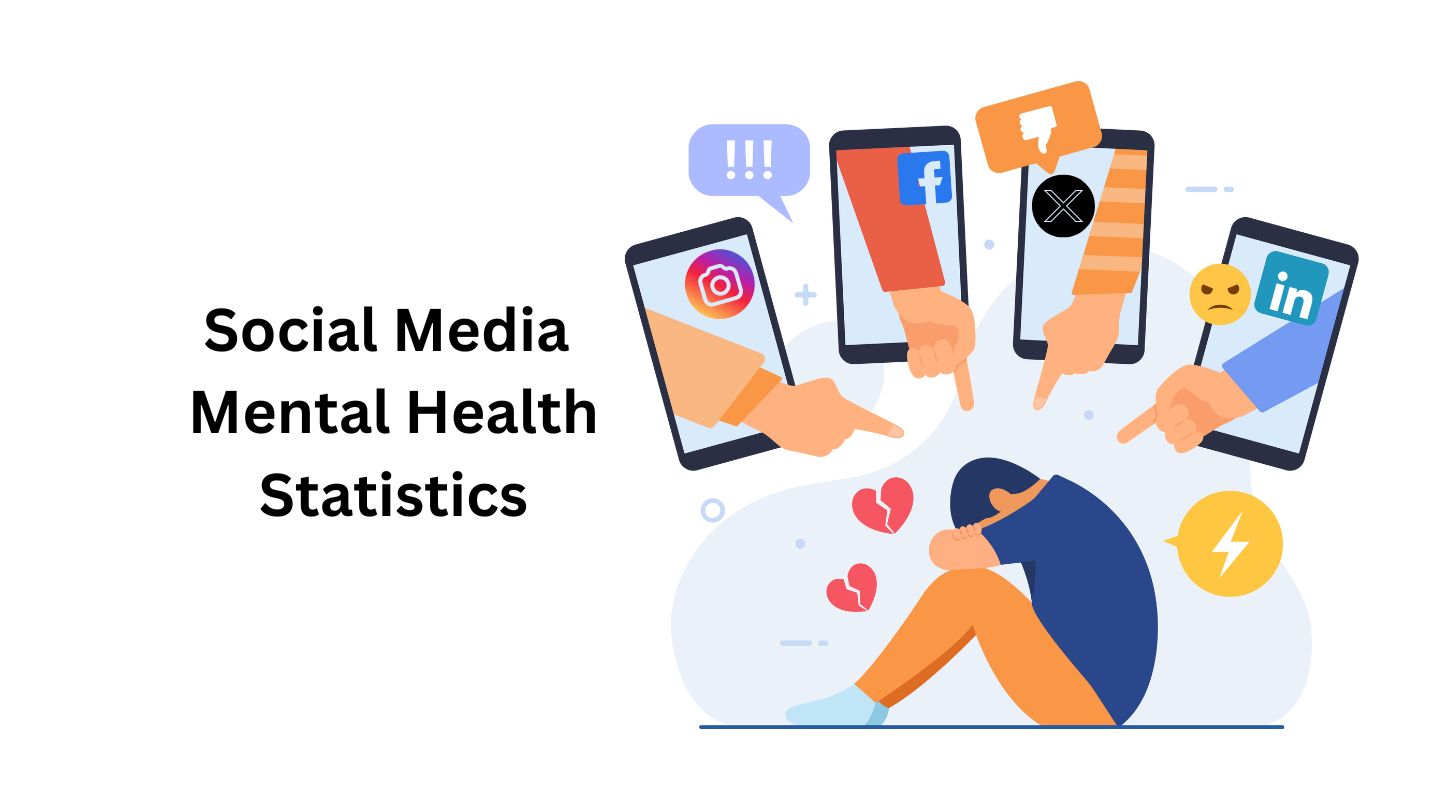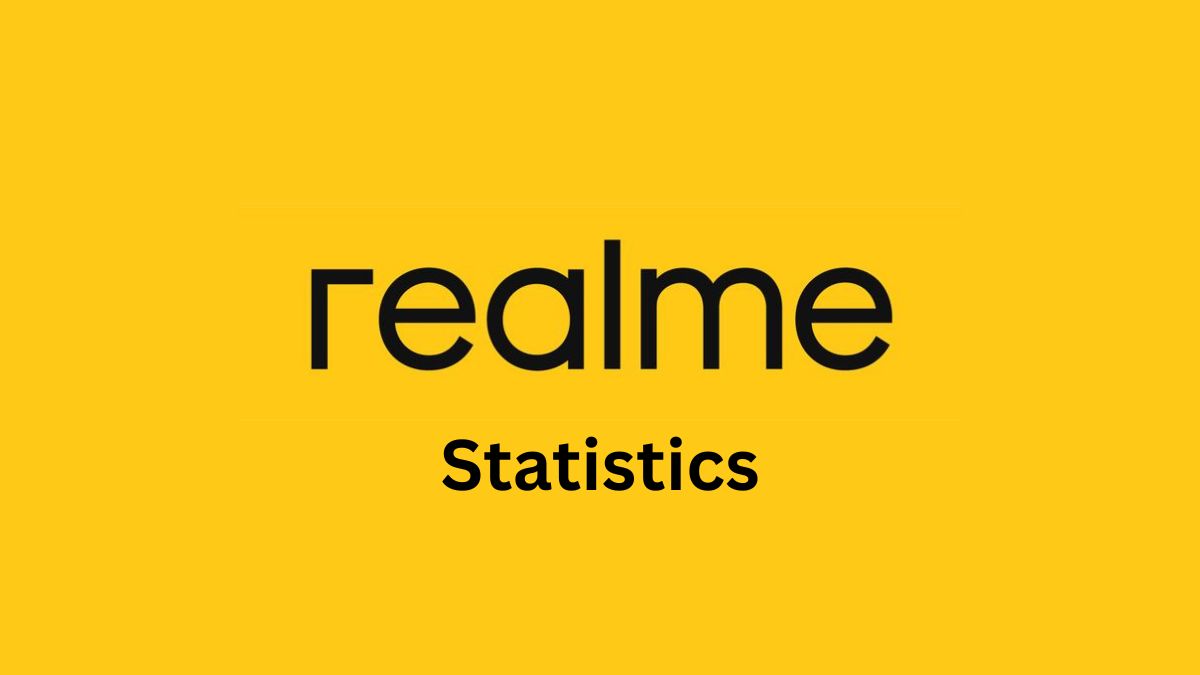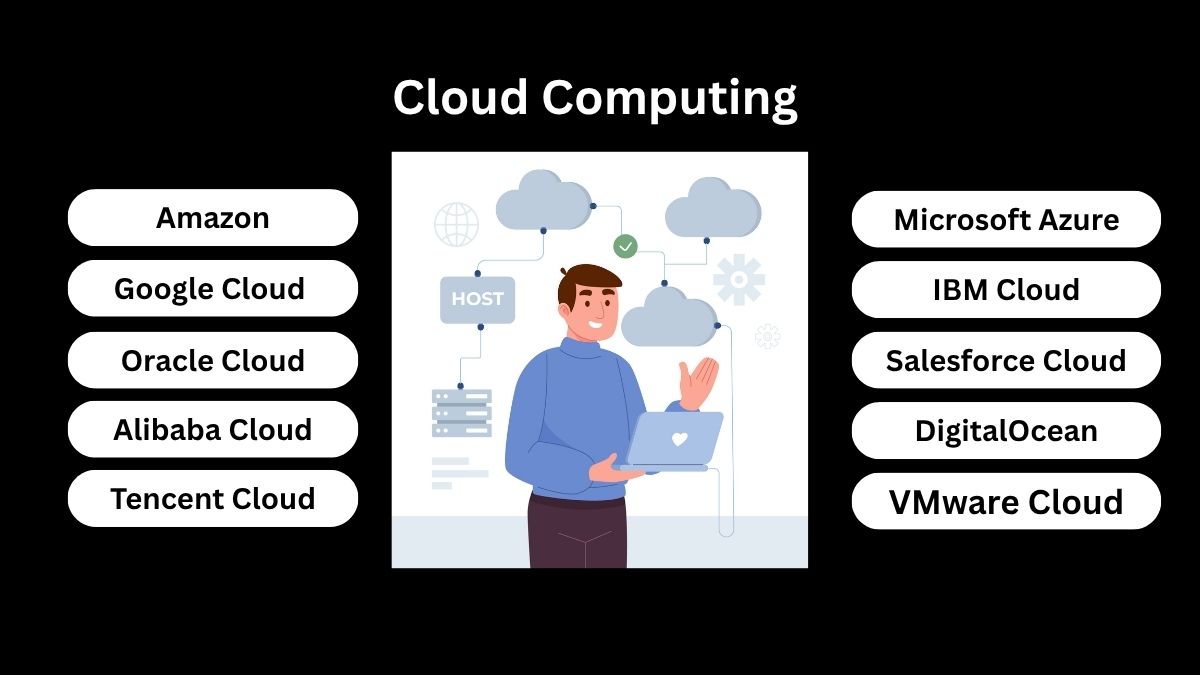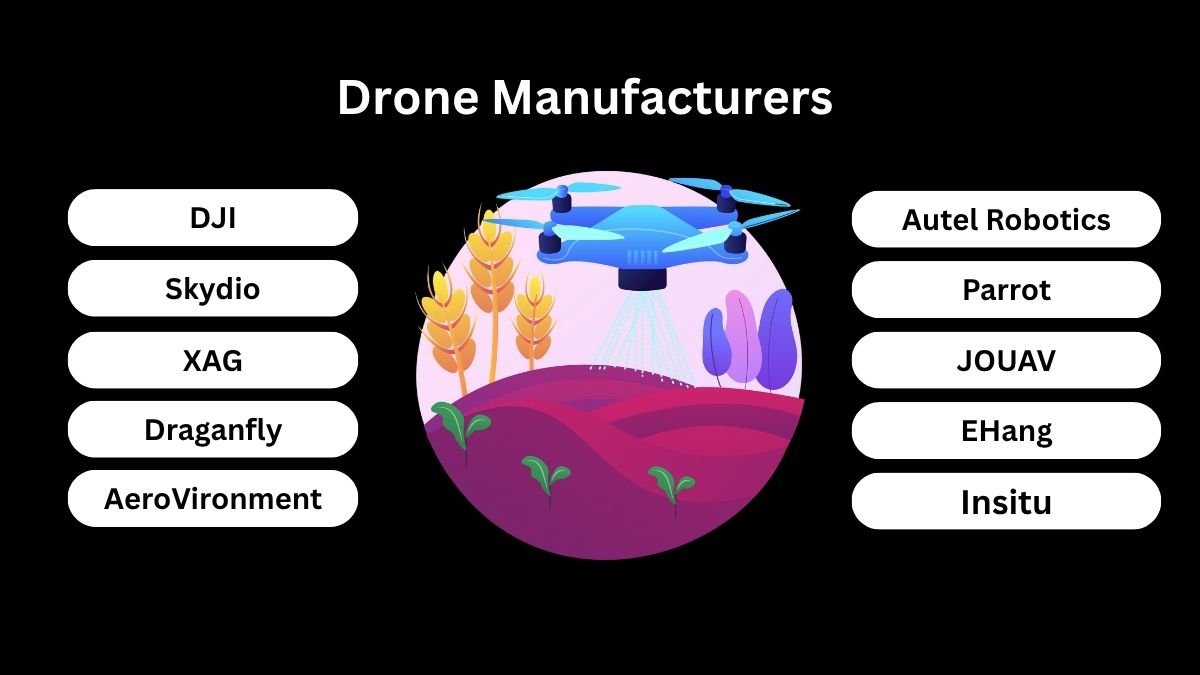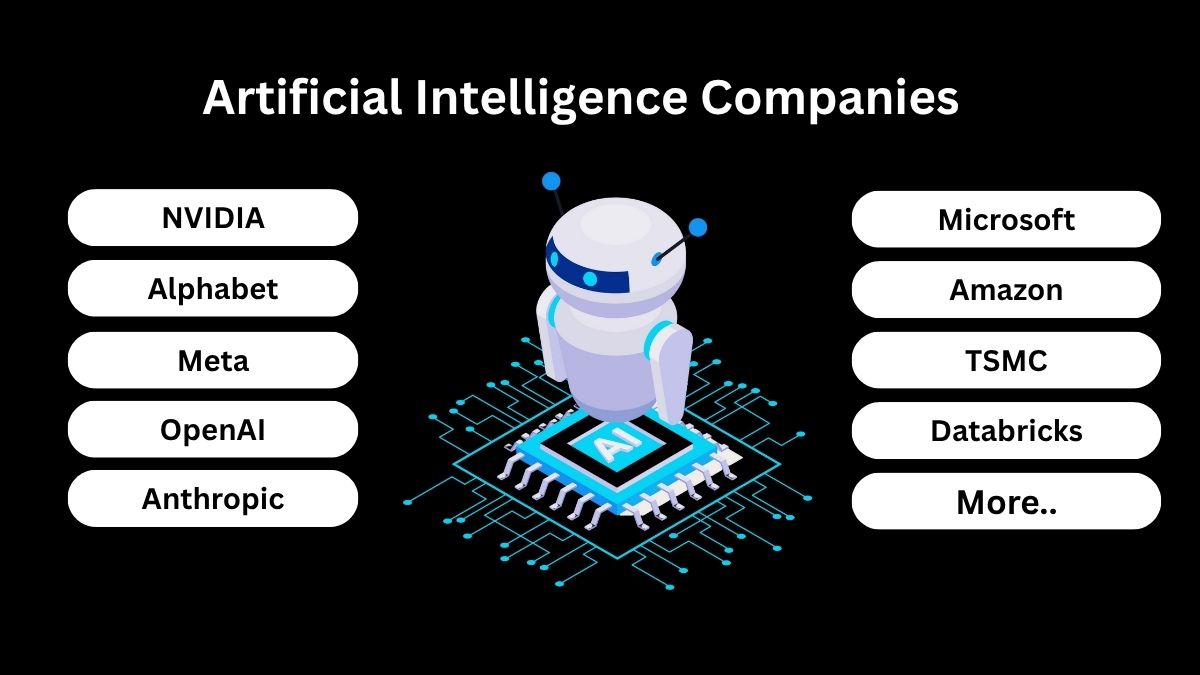Top 10 Agentic AI Companies in the World
Updated · Nov 04, 2025
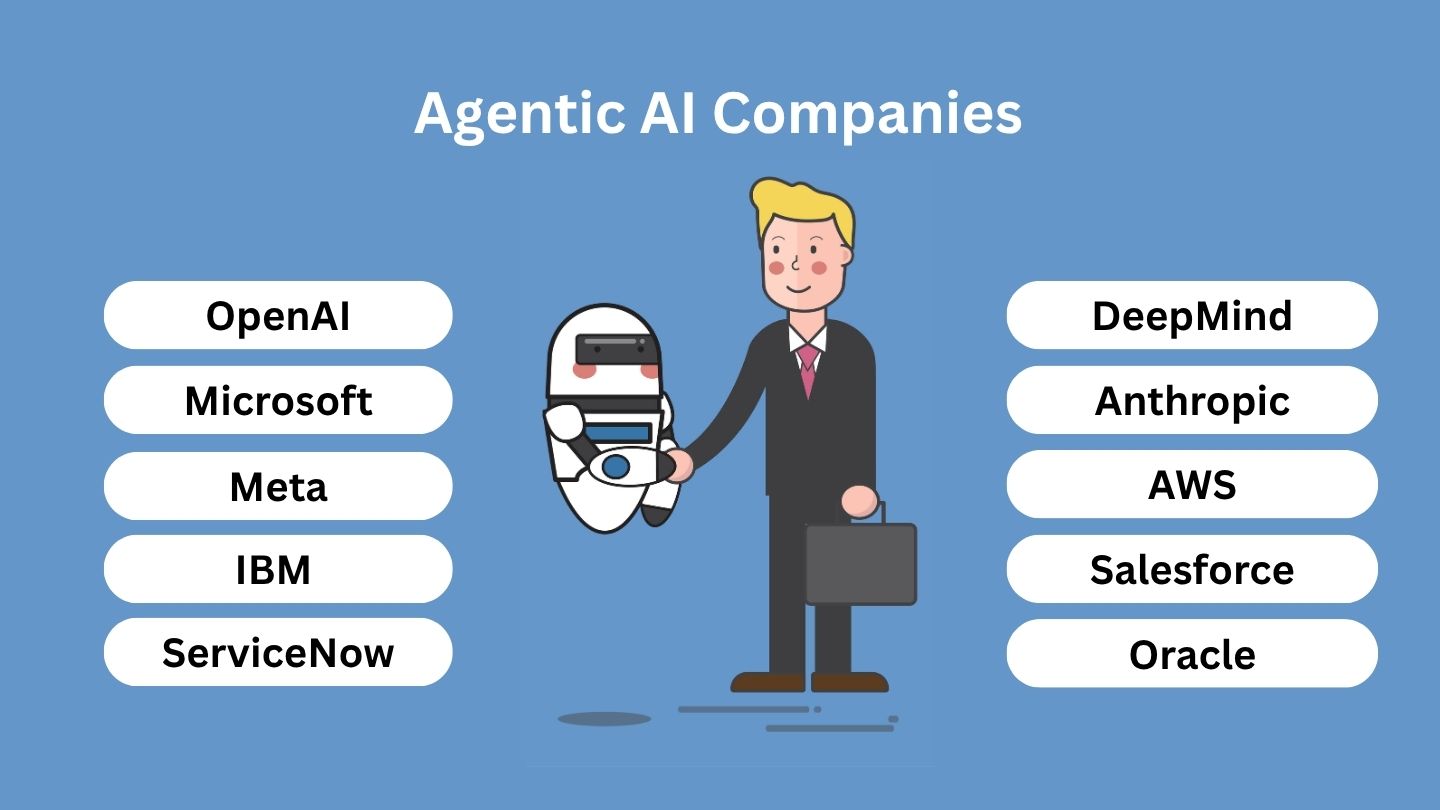
Table of Contents
Introduction
Agentic AI companies are businesses that build or use AI systems that can act like goal-driven assistants. Beyond answering questions, these AIs break work into small goals, plan the steps, use tools or Application Programming Interfaces (APIs), and finish tasks with little help.
These companies create platforms, apps, or infrastructure that let agents remember context, learn from feedback, and coordinate with people or other agents safely. Typical uses include customer support, sales outreach, coding help, operations, research, and data cleanup. Strong guardrails such as approvals, logs, permissions, and bias checks keep actions trustworthy and aligned with business rules, security policies, and compliance, and real-world outcomes.
Agentic AI Market Size
- The global Agentic AI market is projected to reach USD 196.6 billion by 2034, up from USD 5.2 billion in 2024, at a 43.8% CAGR from 2025 to 2034.
- In 2024, North America led the market with over 38% share and about USD 1.97 billion in revenue.
- The United States market was about USD 1.58 billion in 2024 with a 43.6% CAGR outlook.
- The Agentic AI market covers AI systems that work on their own to complete complex tasks.
- These systems use coordinated agents that take in data, reason, plan, and act with limited human input.
- They solve multi-step problems by pairing large language models with modules for decisions, workflows, memory, and planning.
- Adoption is rising because firms want to automate complex work, keep improving processes, and decide instantly.
- About 96% of enterprises are expanding AI agents, and 83% of executives see investing in agentic AI as key to staying competitive.
- Faster responses and smarter actions are helping organizations cut operating costs by about 30%.
- In 2024, ready-to-deploy agents held over 58.5% of the market.
- In 2024, productivity and personal assistant uses held over 28.2% of the market.
- In 2024, multi-agent setups held over 66.4% of the market.
- In 2024, enterprise buyers made up over 62.7% of demand.
- North America also led in 2023 with more than a 38% share.
- By 2028, about 33% of enterprise apps are expected to include agentic AI, up from less than 1% in 2024.
- About 90% of people served by public institutions are ready for AI agents in public services.
- By 2025, roughly 23% of organizations had integrated agentic AI, and another 27% planned adoption within six months.
- A 2025 Google Cloud study reported that 52% of enterprises had AI agents running in production.
- A KPMG survey found 99% of organizations plan to deploy agentic AI, though only 11% had done so by mid-2025.
- In India, a Deloitte study showed over 80% of organizations were exploring autonomous agent development as of April 2025.
- Early adopters report strong returns, with 88% achieving positive ROI versus 74% for generative AI users overall.
- Despite interest, only about 2% had deployed agentic AI at scale by 2025, while about 61% were still exploring.
- The global AI agents market is forecast to reach USD 139.12 billion by 2033, up from USD 3.66 billion in 2023, at a 43.88% CAGR from 2024 to 2033.
- In 2023, North America held about 37.92% share of the AI agents market, or roughly USD 1.3 billion in revenue.
- Healthcare, financial services, and retail are moving fastest, using agents for customer support, fraud detection, and supply chain optimization.
Agentic AI Companies in the World
OpenAI
|
Field
|
Details |
| Company Type | Private, capped-profit subsidiary governed by the OpenAI Nonprofit; converting its operating arm into a PBC while nonprofit retains control. |
| Parent organization | OpenAI, Inc. (the nonprofit that governs OpenAI). |
| CEO | Sam Altman. |
| Number of employees | ≈3,000 (2025, reported). |
| Established (date & year) | December 11, 2015 (public announcement); incorporated December 8, 2015. |
| Subsidiaries (examples) | OpenAI Global, LLC; OpenAI OpCo, LLC; OpenAI Ireland Ltd.; OpenAI UK Ltd. |
| Products (examples) | ChatGPT; GPT-4o/4.1/4.5 and GPT-5 (family of GPT models); DALL·E; Whisper; Sora; OpenAI API/Assistants. |
| Headquarters | 1455 3rd Street, San Francisco, California, USA. |
| Geographical presence (offices) | San Francisco (HQ); London; Dublin; Tokyo. |
| Website | openai.com |
- On March 11, 2025, OpenAI launched “new tools for building agents,” centered on the Responses API plus built-in Web Search, File Search, and Computer Use tools, and an Agents SDK with tracing to orchestrate single- or multi-agent workflows
- OpenAI said the Responses API is a superset of Chat Completions and signaled a plan to deprecate the Assistants API once feature parity is reached, targeting a sunset in mid-2026.
- The Help Center confirms that, as of March 11, 2025, these are the building blocks of the new Agents platform (Responses API, Web Search, File Search, Computer Use, and the Agents SDK with Tracing).
- On July 17, 2025, OpenAI introduced the “ChatGPT agent,” which can think and act using its own virtual computer to browse, log in, run code, and deliver artifacts like slide decks and spreadsheets, with user approvals for consequential actions.
- In OpenAI’s reported evals, the model powering ChatGPT agent set a new pass@1 of 41.6 on Humanity’s Last Exam (44.4 with parallel rollouts), scored 27.4% on FrontierMath with tool use, achieved 68.9% on BrowseComp, and reached 45.5% on SpreadsheetBench versus 20.0% for Copilot in Excel.
- On August 28, 2025, the Realtime API reached general availability alongside a new speech-to-speech model, gpt-realtime, plus support for MCP servers, image input, and SIP phone calling to power production voice agents.
- OpenAI notes that “thousands of developers” used the Realtime API during its public beta, informing quality, latency, and reliability improvements for GA.
- Developer notes specify Realtime GA changes: sessions can now last up to 60 minutes, the gpt-realtime token window is 32,768 tokens, asynchronous function calling is supported, and EU data residency is available for designated realtime models.
- OpenAI published a practical guide to building agents outlining core agent traits (LLM-managed workflow execution, dynamic tool use, and guardrails) and when agents beat traditional automation.
- For governance, OpenAI provides an Admin API and an immutable Audit Logs API so security teams can track keys, invites, user/service-account changes, org configuration updates, and project lifecycle events once audit logging is enabled.
DeepMind + Google Cloud
|
Field
|
Details for Google LLC | Details for Google DeepMind | Details for Google Cloud |
| Company Type | Subsidiary of Alphabet Inc. (U.S. LLC). | Subsidiary AI research lab within Alphabet (trading name of DeepMind Technologies Ltd.) | Division/business unit of Google that delivers cloud products and services. |
| Parent organization | Alphabet Inc. | Alphabet Inc. (via DeepMind Holdings Ltd.). | Google LLC (subsidiary of Alphabet). |
| CEO | Sundar Pichai (CEO of Google & Alphabet). | Demis Hassabis (CEO). | Thomas Kurian (CEO). |
| Number of Employees | 187,103 Alphabet employees (as of June 30, 2025; Alphabet-wide figure). | Estimated 1,001–5,000 (range reported by Dealroom; exact figure not separately disclosed). | 10,001+ (organization size shown on LinkedIn). |
| Established (date & year) | September 4, 1998. | Founded September 23, 2010; merged with Google Brain to form “Google DeepMind” in April 2023. | Roots April 7, 2008 with Google App Engine (first GCP service). |
| Subsidiaries | Examples: YouTube, Fitbit, Google Fiber (among others). \ | None publicly listed; operates within Alphabet (sibling company Isomorphic Labs is separate under Alphabet). | N/A (operates as a Google division; not a separate subsidiary). |
| Products | Google Search, Android, Chrome, Maps, Gmail/Workspace, YouTube, Pixel, Gemini (and more). | AlphaFold; Gemini models and projects like Project Astra that feed Google products. | Vertex AI, BigQuery, Google Kubernetes Engine (GKE), Gemini for Google Cloud. |
| Headquarters | Googleplex, 1600 Amphitheatre Parkway, Mountain View, California, USA. | London, United Kingdom (registered in England & Wales). | Mountain View, California, USA (as part of Google). |
| Geographical Presence | Global offices in nearly 60 countries. | HQ in London with research centres in the U.S., Canada, France, Germany, and Switzerland. | Global cloud regions across North America, South America, Europe, Asia, Middle East, and Australia. |
| Website | about.google / google.com. | deepmind.google.com | cloud.google.com |
- On December 11, 2024, Google DeepMind introduced Gemini 2.0 as a model “for the agentic era,” previewing agentic experiences like Project Astra, Project Mariner, and Jules and releasing Gemini 2.0 Flash to developers and trusted testers.
- On February 5, 2025, Gemini 2.0 became broadly available, with updates to 2.0 Flash Thinking that improved reasoning while keeping low latency for agent-style tasks.
- At Google Cloud Next ’25 (April 2025), Google reported 4 million developers building with Gemini and a 20× year-over-year increase in Vertex AI usage, and announced Agentspace updates, an AI Agent Marketplace, the open-source Agent Development Kit (ADK), and the Agent2Agent (A2A) interoperability protocol.
- Vertex AI is positioned to “orchestrate the three pillars of production AI: models, data, and agents,” with guidance for building multi-agent systems that leverage higher-reasoning Gemini 2.5 models and connect to enterprise workflows and data.
- Vertex AI Agent Builder provides a productized path to create and orchestrate enterprise-grade multi-agent experiences without disrupting existing stacks.
- Google Cloud’s 2025 ROI of AI report highlights business traction: 88% of early adopters of agentic AI report positive ROI from their initiatives.
- A Google Cloud study published September 4, 2025, found that 52% of executives say their organizations have already deployed AI agents.
- Project Astra is DeepMind’s research prototype “on the way to a universal AI assistant,” with capabilities being brought into Gemini Live, Search experiences, and new form factors such as glasses.
- Google’s May 20, 2025 update outlined the vision to bring Astra’s live, multimodal capabilities into products and evolve the Gemini app toward a universal AI assistant.
- Google DeepMind’s Gemini 2.5 models emphasize stronger step-by-step reasoning, which underpins more capable, reliable multi-agent workflows in Vertex AI.
- In October 2025, Google Cloud expanded go-to-market for agents by growing the AI Agent Marketplace in Google Cloud Marketplace to help customers discover and buy production-ready agents.
Microsoft
|
Field
|
Details |
| Company Type | Public company (ticker: MSFT, Nasdaq). |
| Parent organization | None (independent public company). |
| CEO | Satya Nadella (Chairman & CEO). |
| Number of Employees | ~228,000 full-time employees worldwide (125,000 U.S.; 103,000 international) as of June 30, 2025. |
| Established date and year | Founded April 1975 (company founded in 1975 per Microsoft’s “Important Dates”). |
| Subsidiaries (examples) | LinkedIn; GitHub; Activision Blizzard; Nuance Communications; plus many others in Microsoft’s affiliate list. |
| Products (examples) | Windows; Microsoft 365 (incl. Copilot); Azure; Dynamics 365; Power Platform; Surface; Xbox. |
| Headquarters | One Microsoft Way, Redmond, Washington, USA. |
| Geographical Presence | Operates in ~190 countries with global office locations. |
| Website | microsoft.com |
- Microsoft made the Azure AI Foundry Agent Service generally available in mid-2025 (announced at Build on May 19 and reflected as GA by late June), providing a managed runtime for enterprise-grade, multi-agent systems.
- On October 1, 2025, Microsoft introduced the Microsoft Agent Framework (open-source, .NET and Python) to build, orchestrate, and deploy AI agents with graph-based workflows.
- Copilot Studio added multi-agent orchestration at Build 2025 and has continued monthly updates that expand agent controls and interoperability.
- Microsoft 365 Copilot launched “Agent Mode” across Office apps on September 29, 2025, enabling agents to create, analyze, and collaborate inside Word, Excel, and more.
- Admins can now track custom Copilot agents via the Microsoft 365 “agent usage” report, which records adoption and activity for organization-approved agents.
- Azure AI Foundry shipped “Deep Research” in public preview on July 7, 2025, exposing advanced agentic web-research capabilities by API/SDK.
- Microsoft is rolling out Windows 11 Copilot upgrades—including “Hey Copilot” voice activation, Copilot Vision expansion, and new Copilot Actions that can perform real-world tasks—marking a push toward desktop agents.
- GitHub Copilot, Microsoft’s coding agent, surpassed 20 million all-time users and is used by over 90% of the Fortune 100, signaling broad enterprise developer adoption.
- Microsoft reports that more than 85% of the Fortune 500 are using Microsoft AI solutions, underscoring the company’s enterprise reach for agentic capabilities.
- Survey data shared by Microsoft shows 84% of 10,000 Microsoft 365 Copilot users would not go back to working without it, while ~30% of GitHub Copilot code suggestions are accepted by developers.
- Microsoft’s Agent Factory and Observability guidance add concrete guardrails, tracing, and evaluation patterns to help teams build safe, transparent, and well-governed agents.
- The Azure AI Foundry Agent Service manages threads, tool calls, identity, networking, and content-safety integration so production agents are secure and observable by design.
Anthropic
|
Field
|
Details |
| Company Type | Private company; Delaware Public Benefit Corporation (PBC). |
| Parent organization | Independent (no parent); governed by a board and the Long-Term Benefit Trust. |
| CEO | Dario Amodei. |
| Number of Employees | ≈1,300–1,500 (2025). |
| Established date and year | 2021 |
| Subsidiaries (examples) | Anthropic Limited (UK); Anthropic Data Ltd (UK); Anthropic Ireland, Limited. |
| Products (examples) | Claude family (Opus, Sonnet, Haiku), Claude Code, Claude API; features such as Tool/Computer Use and recent 4.5/4.1 model releases. |
| Headquarters | 500 Howard Street, San Francisco, California, USA. |
| Geographical Presence | Offices in the US (San Francisco) and Europe (London, Dublin); product availability across many supported countries/regions. |
| Website | anthropic.com |
- On September 29, 2025, Anthropic released Claude Sonnet 4.5, stating it is its best coding model to date and the strongest for building complex, computer-using agents, with sizable gains in reasoning and math for multi-step work.
- On the same day, Anthropic introduced the Claude Agent SDK to help developers build production agents (originally evolved from “Claude Code”) and published best-practice guidance for agent design.
- In September 2025, Anthropic added “Memory” for teams so Claude can retain ongoing project context for work, with privacy controls such as granular settings and an incognito mode.
- Since October 2024, developers have been able to build “Computer Use” agents that control apps and the desktop via the Anthropic API as well as through Amazon Bedrock and Google Cloud Vertex AI.
On October 17, 2025, Anthropic unveiled “Skills,” reusable work-specific packages (instructions, scripts, resources) that make Claude faster and more consistent across Claude.ai, Claude Code, the API, and the Agent SDK, with early users including Box, Rakuten, and Canva. - Anthropic reports internal agentic adoption: CEO Dario Amodei said that AI (Claude) now writes about 90% of code for most teams, with engineers supervising and handling complex edits rather than being replaced.
- Anthropic’s economic research finds the share of tasks that are “directively” automated rose from 27% to 39% between late-2024 and mid-2025, suggesting growing reliance on agent-style automation at work.
- Anthropic’s May 22, 2025 model update introduced Claude 4 (Opus 4 and Sonnet 4), emphasizing sustained performance on long-running tasks and agent workflows, which are core to agentic AI.
- Anthropic’s December 2024 “Building Effective AI Agents” research shared reference implementations—including a computer-use agent and a coding agent—that illustrate planning, tool use, and stepwise execution.
- Anthropic’s August 27, 2025 misuse report warns that agentic AI has begun to be weaponized for sophisticated cyberattacks, underscoring the need for stronger guardrails in autonomous systems.
- External coverage in October 2025 highlights rapid commercial traction, with reports of Anthropic approaching a multi-billion-dollar revenue run-rate in 2025 and targeting significantly higher figures in 2026, driven largely by enterprise customers.
Meta Platforms, Inc.
|
Field
|
Details |
| Company Type | Public company (Nasdaq: META). |
| Parent organization | None – independent public company. |
| CEO | Mark Zuckerberg, Founder, Chairman & CEO. |
| Number of Employees | 74,067 employees (as of December 31, 2024). |
| Established date and year | February 4, 2004 (founded as Facebook). |
| Subsidiaries (examples) | Edge Network Services Ltd. (Ireland); Facebook India Online Services Pvt. Ltd.; Facebook UK Ltd.; Cassin Networks ApS (Denmark). |
| Products (examples) | Facebook, Instagram, WhatsApp, Messenger, Threads; Meta Quest VR headsets; Ray-Ban Meta smart glasses. |
| Headquarters | 1 Meta Way, Menlo Park, California 94025, USA. |
| Geographical Presence | Offices in 90+ cities across North America, Europe, Middle East, Africa, Asia-Pacific, and Latin America. |
| Website | https://www.meta.com/ (About & company info). |
- As of May 29, 2025, Meta said Meta AI has 1 billion monthly active users across Facebook, Instagram, WhatsApp, and Messenger, up from ~500 million in late 2024.
- On March 19, 2025, Meta began rolling out Meta AI across 41 European countries and 21 overseas territories, initially supporting six European languages with text-chat features.
- On April 29, 2025, Meta launched a standalone Meta AI app built with “Llama 4” to offer a more personal, voice-first assistant experience.
- On October 1, 2025, Meta announced it will use people’s interactions with Meta AI to personalize content and ads starting December 16, 2025 (notifications from October 7); Reuters notes the initial rollout excludes the UK, EU, and South Korea.
- Meta’s AI Studio lets creators and businesses build custom AIs/agents for Instagram, Messenger, and WhatsApp; Meta started a broad U.S. rollout in July 2024.
- For commerce and customer ops, Meta added centralized campaigns and expanded AI support for WhatsApp Business at its Conversations conference on July 1, 2025.
- During Advertising Week 2025 (Oct 2), Meta introduced Business AI assistants/agents to help brands automate sales and marketing workflows.
- Meta’s Llama Guard is an open-weight safety model designed to filter risky inputs/outputs in human-AI conversations, supporting safer agent behavior.
- Meta continues to push agentic, hands-free experiences via Ray-Ban Meta AI glasses, enabling voice queries and messaging without a phone in hand.
- In October 2025, Meta said it will personalize recommendations using generative-AI interactions, signaling deeper integration of agent signals into ranking systems across its apps.
Amazon Web Services (AWS)
|
Field
|
Details |
| Company Type | Subsidiary of Amazon.com, Inc. focused on cloud computing. |
| Parent organization | Amazon.com, Inc. |
| CEO | Matt Garman (effective June 3, 2024). |
| Number of Employees | Not disclosed separately; Amazon employed ~1,556,000 people company-wide as of December 31, 2024. |
| Established date and year | 2006 (AWS launched in spring 2006; S3 launched March 14, 2006). |
| Subsidiaries (examples) | Annapurna Labs; AWS Elemental; NICE Software; AWS Wickr. |
| Products (examples) | EC2, S3, DynamoDB, CloudFront, IAM, Lambda, SageMaker, Bedrock, Amazon Q Developer. |
| Headquarters | Seattle, Washington, USA (410 Terry Ave N, Seattle, WA 98109). |
| Geographical Presence | Global offices and entities across the Americas, EMEA, and APAC; cloud infrastructure spans 38 Regions and 120 Availability Zones, with more announced. |
| Website | aws.amazon.com |
- On October 13, 2025, AWS made Amazon Bedrock AgentCore generally available, an agentic platform to build, deploy, and operate production AI agents with low-latency runtimes and built-in observability.
- AgentCore is framework-agnostic and works with CrewAI, LangGraph, LlamaIndex, Strands Agents, and any model hosted inside or outside Bedrock.
- At launch week, an industry note reported the AgentCore SDK surpassed 1 million downloads, indicating strong early developer interest.
- Multi-agent collaboration for Amazon Bedrock moved from preview to general availability on March 10, 2025, enabling coordinated agent teams for complex workflows.
- On October 8, 2025, AWS introduced Amazon Quick Suite, an agentic AI workspace that unifies chat, research, BI, and automation; it is initially available in US East (N. Virginia), US West (Oregon), Asia Pacific (Sydney), and Europe (Ireland).
- A press rundown notes Quick Suite’s goal is to let users ask in natural language and take actions across apps and data, positioning it as a workplace “agentic teammate.”
- In March 2025, AWS formed a dedicated Agentic AI group led by Swami Sivasubramanian (now VP, Agentic AI) to accelerate autonomous task execution across products.
- Amazon Q Developer expanded in April 2025 with new IDE integrations and European availability, and GitLab Duo with Amazon Q reached GA to bring Q’s agentic capabilities into the DevSecOps workflow.
- AWS provides Bedrock Guardrails including PII detection and filtering and lets you attach guardrails directly to agents so inputs/outputs stay within organizational policy.
- re:Invent 2025 features an “Agentic AI & Data Foundations” keynote, underscoring AWS’s focus on scaling real-world agent deployments.
NVIDIA
|
Field
|
NVIDIA |
| Company Type | Public company (Nasdaq: NVDA). |
| Parent organization | None – independent public company. |
| CEO | Jensen Huang (Founder, President & CEO). |
| Number of Employees | ~36,000 employees in 38 countries (Fiscal 2025). |
| Established date and year | Founded April 5, 1993. |
| Subsidiaries (examples) | Mellanox Technologies, Ltd; NVIDIA International, Inc.; NVIDIA Singapore Pte Ltd; Bright Computing B.V.; Cumulus Networks, Inc.; DeepMap entities (various). |
| Products (examples) | GeForce RTX 50 Series GPUs; Blackwell architecture (e.g., B200); DGX systems (e.g., DGX B200); GB200 NVL72 rack-scale; data-center platforms (HGX, CUDA/NVIDIA AI Enterprise). |
| Headquarters | 2788 San Tomas Expressway, Santa Clara, California, 95051, USA. |
| Geographical Presence | Global footprint with 50+ offices; operations across 38 countries. |
| Website | nvidia.com. |
- On March 18, 2025, NVIDIA launched the open Llama Nemotron reasoning models to give enterprises a business-ready foundation for agentic AI platforms, with partners like Accenture, Microsoft, SAP, ServiceNow, CrowdStrike, and more building reasoning agents.
- On the same day, Oracle + NVIDIA said 160+ AI tools and 100+ NVIDIA NIM microservices would be available natively in the OCI Console to speed agentic AI inference and deployment.
- CrowdStrike reported that running NVIDIA NIM microservices internally made its Charlotte AI detection triage ~2× faster while using ~50% fewer compute resources, reducing analyst alert fatigue.
- NVIDIA NeMo microservices (2025) are positioned to keep agents accurate and adaptive via “data flywheels,” with how-to guides and case studies for production workloads.
- NIM microservices provide prebuilt, optimized inference containers that let teams deploy models across NVIDIA-accelerated infrastructure; NVIDIA highlighted broad availability to the world’s 28 million developers at COMPUTEX 2024 and continued expanding access in 2025.
- NeMo Guardrails added NIM microservices in January 2025 to improve accuracy, safety, and control when building agentic applications in regulated enterprises.
- The open-source NeMo Agent Toolkit helps teams build, profile, and optimize agents across frameworks like LangChain and CrewAI, unifying metrics and cost visibility for cross-agent systems.
- NVIDIA ACE (Avatar Cloud Engine) powers digital-human agents; ACE microservices (delivered as NIMs) can run on RTX AI PCs or on the NVIDIA Graphics Delivery Network serving 100 countries, enabling low-latency, multimodal assistants.
- At CES 2025, NVIDIA showed agentic gameplay with ACE AI “co-playable” characters, including the PUBG Ally that can plan, drive, fight, and coordinate like a human teammate.
- Project GR00T / GR00T N1 advanced embodied agents: NVIDIA announced an open humanoid robot foundation model with simulation frameworks to speed robot skills and reasoning.
- In recent commentary, Jensen Huang framed 2025 as the year of AI agents, noting NVIDIA’s own heavy use of agentic tools internally and predicting massive growth in agent assistants across work.
IBM
|
Field
|
Details |
| Company Type | Public company (NYSE: IBM). |
| Parent organization | None – independent public company. |
| CEO | Arvind Krishna (Chairman, President & CEO). |
| Number of Employees | ≈279,000 (2024: 270.3k in wholly owned subsidiaries + 8.9k in less-than-wholly-owned). |
| Established date and year | Founded June 16, 1911 (as Computing-Tabulating-Recording Company); renamed IBM in 1924. |
| Subsidiaries (examples) | Red Hat, Inc.; IBM Japan, Ltd.; IBM India Private Limited; IBM United Kingdom Limited; IBM (China) Co., Ltd. (from IBM Exhibit 21). |
| Products (examples) | watsonx (AI platform); IBM Cloud; IBM z Systems (e.g., z17); IBM Power servers; IBM Quantum services. |
| Headquarters | 1 New Orchard Road, Armonk, New York 10504, USA. |
| Geographical Presence | Offices in 170+ countries; helps clients in 175+ countries. |
| Website | ibm.com |
- On October 7, 2025, IBM said watsonx Orchestrate now anchors its agentic AI stack with more than 500 tools and customizable, domain-specific agents, designed to be tool-agnostic so enterprises can deploy and govern agents across any environment.
- IBM added AgentOps to watsonx Orchestrate, bringing real-time monitoring, policy-based controls, and lifecycle observability so teams can track, govern, and audit autonomous agents in production.
- IBM’s June 10, 2025 executive study reported an expected 8× surge in AI-enabled workflows by 2025, with 64% of AI budgets now focused on core business functions and 69% of leaders citing improved decision-making as agentic AI’s top benefit.
- Reuters reported in May 2025 that IBM has a USD 6 billion and rising generative-AI book of business and is enabling customers to create custom agents in under five minutes, while integrating third-party agents from platforms like Salesforce and Workday.
- On October 8, 2025, S&P Global and IBM announced a partnership to embed watsonx Orchestrate into S&P Global’s offerings, and noted the Agent Catalog already features 500+ pre-built agents and tools for rapid deployment.
- On October 16, 2025, IBM released new AI agents for the Oracle Fusion Applications AI Agent Marketplace, expanding agentic coverage for finance and operations use cases.
- IBM’s Agentic Workflows let developers stitch together standardized, reusable flows that sequence multiple agents and tools, IBM also announced Langflow integration for drag-and-drop agent building.
- IBM’s 2025 Guide to AI Agents and AgentOps explainer emphasize governance: organizations need guardrails, standards, and observability to manage autonomous systems safely at scale.
- A July to August 2025 briefing from IBM Software leadership cautioned that most enterprises will see material benefits from agentic AI in 18–24 months, reflecting the time required to integrate agents with core systems and controls.
- IBM is extending agentic AI beyond office workflows; for example, an October 2025 practitioner write-up details “Agentic AI in Concert for Z” where watsonx Orchestrate coordinates mainframe-adjacent assistants and orchestrator agents for operations.
Salesforce
| Field |
Salesforce |
|
Company Type |
Public company (NYSE: CRM). |
| Parent organization |
None — independent public company. |
|
CEO |
Marc Benioff (Chair, CEO & Co-Founder). |
| Number of Employees |
76,453 (as of January 31, 2025). |
|
Established date and year |
Founded March 8, 1999. |
| Subsidiaries (examples) |
Slack Technologies, LLC; Tableau Software, LLC; MuleSoft, LLC; Heroku, Inc.; Quip LLC. |
|
Products (examples) |
Sales Cloud, Service Cloud, Marketing Cloud, Commerce Cloud, Data Cloud, Slack, MuleSoft, Tableau, Einstein AI, Agentforce. |
| Headquarters |
Salesforce Tower, 415 Mission St, San Francisco, CA 94105, USA. |
|
Geographical Presence |
Global footprint with offices across the Americas, EMEA, and APAC; “90+ cities / 100+ offices” noted in company facts and dedicated locations pages. |
| Website |
- On October 13, 2025, Salesforce globally launched Agentforce 360, stating it already serves 12,000 customers and that Slack will add conversational AI to let employees retrieve data and complete tasks inside chats with enterprise guardrails.
- On October 15, 2025, Reuters reported Salesforce expects over USD 60 billion revenue in 2030, crediting rapid AI rollouts and noting Agentforce 360’s global availability across its clouds.
- Salesforce’s customer story for Wiley shows a 40%+ increase in case resolution in the first weeks of Agentforce, alongside a 213% ROI from Salesforce investments.
- AgentExchange, Salesforce’s marketplace for agent components, launched on March 4, 2025 with 200+ partners and hundreds of ready-made actions, topics, and templates vetted for security and customer reviews.
- Salesforce introduced Agentforce 360 updates that add enhanced reasoning controls, a unified voice experience, and a single workspace with simulation and live debugging to speed agent iteration.
- Salesforce rolled out Setup powered by Agentforce during Dreamforce 2025 to help admins configure and monitor agent capabilities directly within org setup flows.
- Industry-specific expansion continued with Agentforce for Financial Services offering prebuilt, role-based agent templates to automate front-office tasks without code.
- For governance, Agentforce is integrated with the Einstein Trust Layer, which enforces AI guardrails, respects Salesforce permissions, and supports secure data retrieval and masking for safer agent actions.
ServiceNow
|
Field
|
Details |
| Company Type | Public company (NYSE: NOW). |
| Parent organization | None — independent public company. |
| CEO | Bill McDermott (Chairman & CEO). |
| Number of Employees | 26,293 full-time employees as of December 31, 2024 (13,193 U.S.; 13,100 international). |
| Established date and year | Founded in 2004 (by Fred Luddy). |
| Subsidiaries (examples) | ServiceNow Australia Pty Ltd; ServiceNow GmbH (Austria); ServiceNow Canada Inc.; ServiceNow Brasil Gerenciamento de Serviços Ltda; LightStep, Inc.; Era Software, Inc.; Sweagle NV. |
| Products (examples) | ServiceNow AI Platform/Now Platform; IT Service Management (ITSM); Customer Service Management (CSM); IT Operations Management (ITOM); HR/Employee workflows; Security Operations & GRC; Now Assist (gen-AI); ServiceNow AI Agents. |
| Headquarters | 2225 Lawson Lane, Santa Clara, CA 95054, USA. |
| Geographical Presence | Global offices across North America, Latin America, Europe, the Middle East & Africa, and Asia-Pacific (see locations directory). |
| Website | servicenow.com |
- On May 6, 2025, ServiceNow made the AI Control Tower generally available and said AI Agent Fabric would move from early adopters to GA in Q3 2025, positioning it to govern and scale enterprise agentic AI.
- On September 10, 2025, the Zurich platform release added faster multi-agent development and enterprise-wide AI security, building on AI Control Tower for lifecycle governance of agents.
- On September 30, 2025, ServiceNow launched AI Experience, a unified, conversational, multimodal front door to enterprise AI with built-in governance and security.
- AI Agent Fabric is designed to connect agents across platforms and tools, adding MCP connectivity and Agent2Agent (A2A) interoperability so digital agents can coordinate end-to-end workflows.
- ServiceNow states its AI Agents can work autonomously in the background, manage processes, and collaborate with employees with approvals and guardrails.
- In Q2 2025, ServiceNow reported 22.5% year-over-year revenue growth to USD 3.22 billion and USD 3.11 billion in subscription revenue, citing AI momentum; customers over USD 20 million ARR rose by 30%.
- In May 2025, ServiceNow announced an agreement to acquire Moveworks for USD 2.85 billion, its largest deal to date, to strengthen autonomous AI assistant capabilities.
- Industry reporting notes ServiceNow AI agents have reduced complex case handling time by 52% in production deployments, with humans in the loop for approvals.
- A ServiceNow-linked study projects agentic AI could reshape over 10 million jobs in India by 2030, underscoring workforce and skills impacts alongside productivity gains.
- Independent analyses around Knowledge 2025 emphasize ServiceNow’s push to an “AI platform for the agentic era”, highlighting AI Control Tower and AI Agent Fabric as core to production agents.
Comparing Companies
|
Company
|
Agentic AI offerings (examples) | Agent framework / dev tooling | Safety & governance features | Where it shines / notes |
| OpenAI | ChatGPT and GPT models that can plan, call tools/APIs, and act via “Actions” and real-time voice/vision agents. | Assistants API (with Actions), Realtime API for live, tool-using agents. | Model and usage policies; model spec and platform safety guidance. | Fast to prototype production-grade task-doing agents that integrate with apps and data. |
| Google (DeepMind + Google Cloud) | Vertex AI “Agent Builder/Agent Engine” for enterprise, multi-agent experiences. | Gemini function-calling, code execution sandbox, grounding/search, OSS integrations (LangGraph/LangChain). | Enterprise controls across Vertex AI; grounding with Google Search and evaluation. | Strong infra + tools to deploy, observe, and scale agents tied to Google data/services. |
| Microsoft | Azure AI Agent Service to build, orchestrate, and monitor agents; Copilot Studio to compose task-doing copilots/agents. | Azure AI Foundry + Agent Service; extensibility via plugins, APIs, and enterprise connectors. | Enterprise governance across Azure (Responsible AI, content filters) baked into services. | Deep Microsoft 365/Teams/Graph integration for work-automation agents. |
| Anthropic | Claude models optimized for complex, tool-using “agent” workflows (extended thinking/interleaving). | Messages API with tool use; computer-use tools; SDK compatibility. | Constitutional AI, ASL3 protections, classifier guards. | Strong focus on safety and reliable reasoning for sustained, multi-step tasks. |
| Meta | Meta AI and AI Studio to create deployable AIs across WhatsApp/Instagram/Messenger; Llama models for agents. | AI Studio for building and shipping custom AIs; open-source Llama stack for developer control. | Llama Guard (incl. multimodal) and responsible-use guidance. | Massive consumer reach + open models make it versatile for social, commerce, and assistants. |
| Amazon (AWS) | Agents for Amazon Bedrock (with memory, RAG, code-execution, multi-agent collaboration). | Bedrock AgentCore; managed runtime; connects to APIs, systems, and data; guardrails. | Amazon Bedrock Guardrails and security primitives. | Strong for production agents tied to AWS stacks and enterprise backends. |
| NVIDIA | NIM microservices + NeMo Agent toolkit to build/host high-perf AI agents; blueprints for agentic apps. | Prebuilt, portable inference microservices; dev toolkit to weave agents into workflows. | Enterprise-grade deployment, observability, and support via NVIDIA AI Enterprise. | Best for self-hosted, accelerated, low-latency agent workloads at scale. |
| IBM | watsonx Orchestrate adds “agentic workflows,” domain agents (finance, supply chain, service). | No-/pro-code agent builder, AgentOps (observability/governance), watsonx Assistant and Code Assistant. | watsonx.governance with AI guardrails and agent governance objects. | Enterprise-first agents with strong governance and mainframe/IT automation options. |
| Salesforce | Agentforce to build autonomous, production-grade agents across Sales/Service/Slack/etc., integrated with Einstein Trust Layer. | Low-code Agent Builder, actions/flows/MuleSoft connectors, multi-channel deployment. | Trust Layer guardrails and security/usage policies for compliant agents. | Ideal for CRM-centric, data-grounded agents in the Salesforce ecosystem. |
| ServiceNow | ServiceNow AI Agents + Now Assist to automate workflows and let agents “learn, think, collaborate, act.” | AI Agent Fabric and platform tools to deploy skills/agents across IT, HR, and customer ops. | Built-in guardrails and approvals; enterprise trust/compliance focus. | Great for operational agents embedded in ServiceNow workflows and processes. |
Sources

Joseph D'Souza founded ElectroIQ in 2010 as a personal project to share his insights and experiences with tech gadgets. Over time, it has grown into a well-regarded tech blog, known for its in-depth technology trends, smartphone reviews and app-related statistics.

